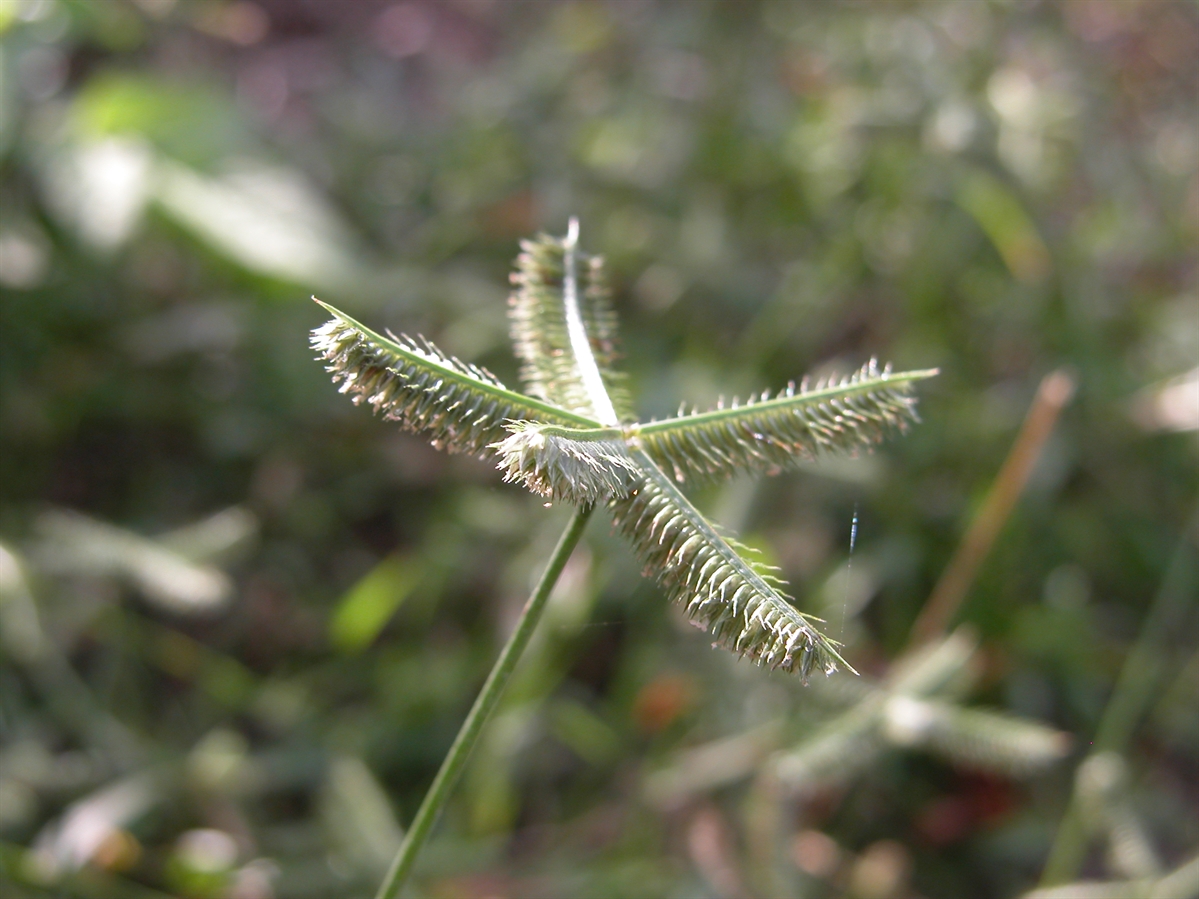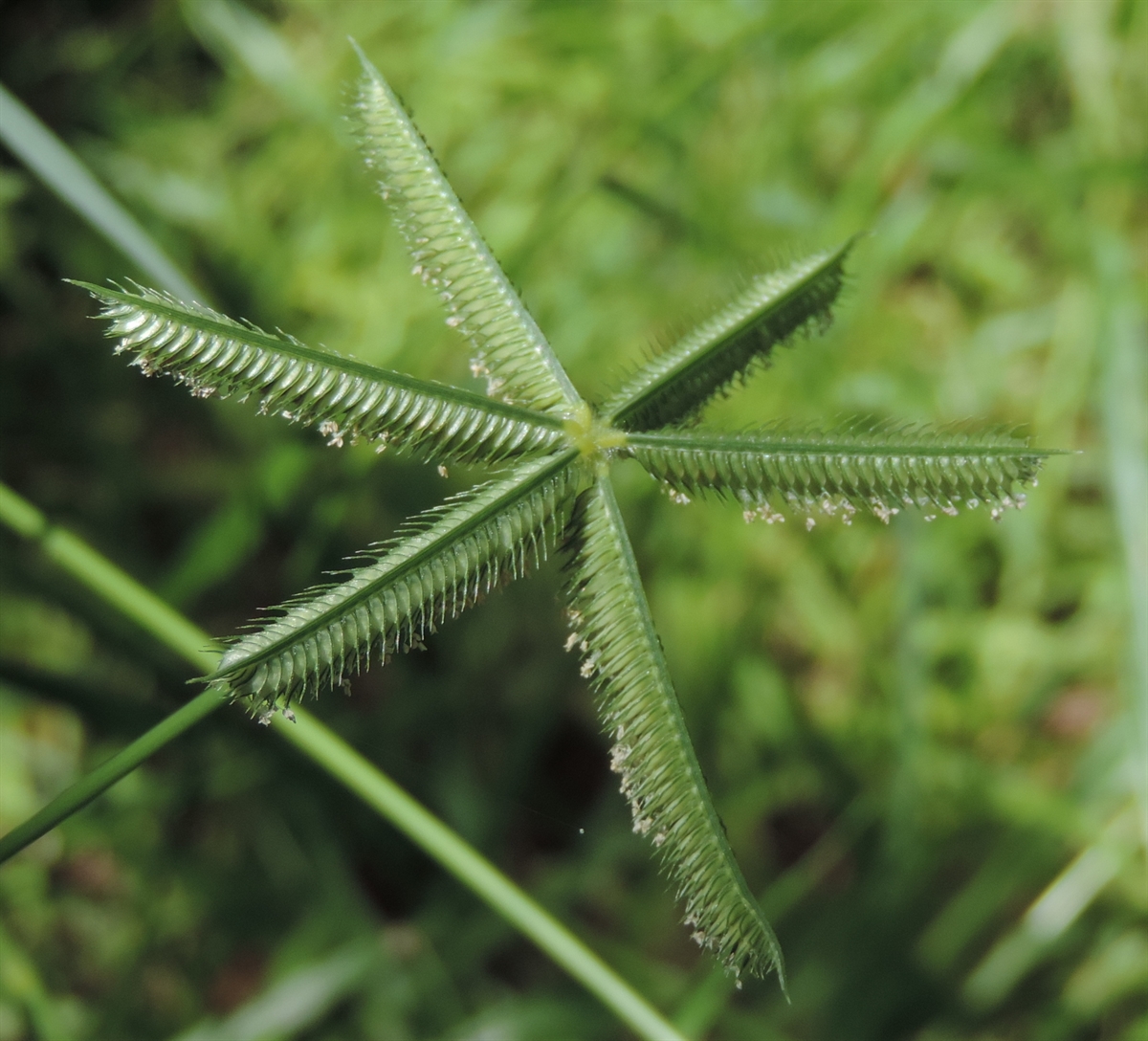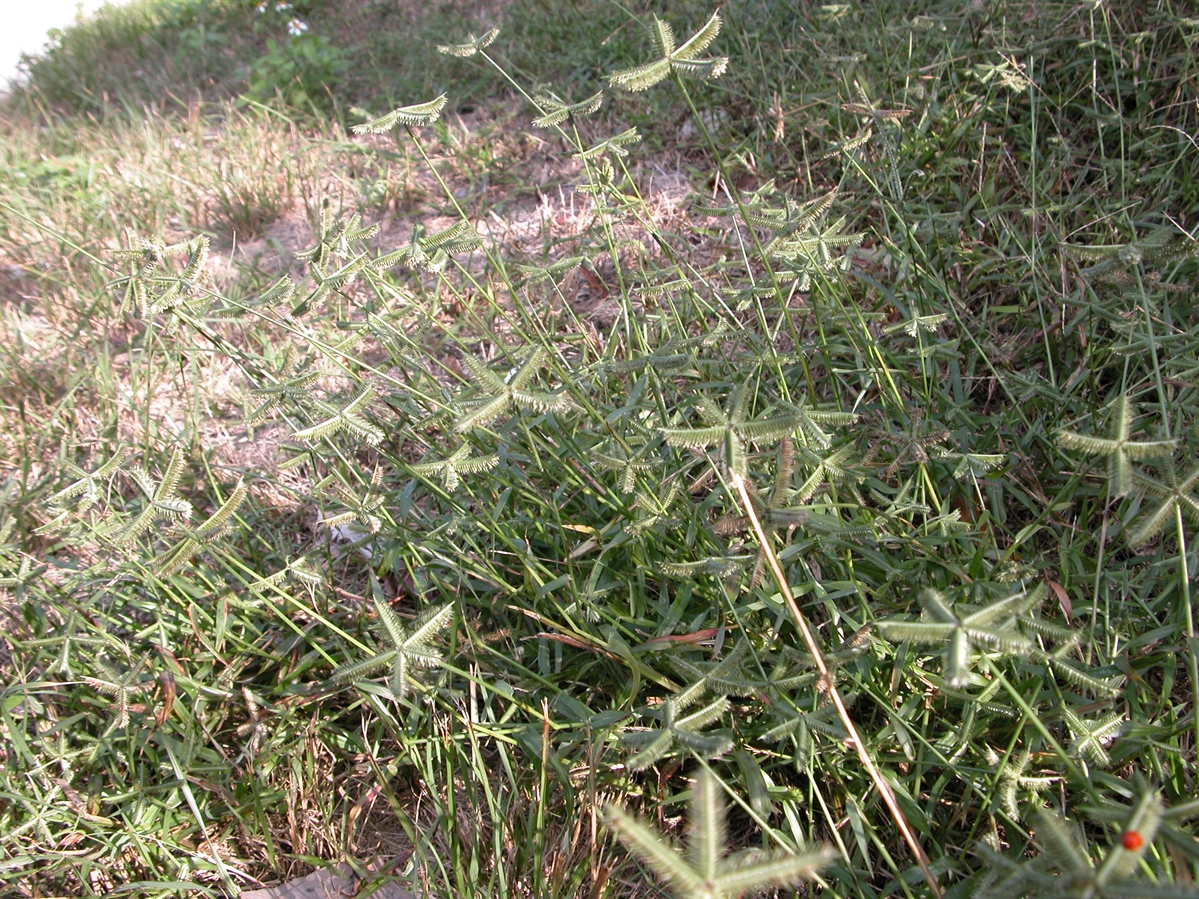Habit: Dactyloctenium aegyptium grows as an annual with stems to 75 cm in height (usually shorter) and creeping via stolons and rooting at the nodes. The leaves are arranged alternately to 10 cm in length (usually shorter) with a basal sheath extending along the stem. At the point of divergence of the leaf sheath to the leaf blade is a fringe of cilia forming the ligule. The leaves are parallel veined.
The zygomorphic flowers are arranged in a 4-5 digitate panicle of racemes each up to 5 cm in length and made of laterally compressed spikelets with 3 – 5 florets each. The spikelets to one side of the rachis. At the base of each spikelet are 2 yellow brown, ciliate structures called glumes that are shorter than the lemma and one with a curved awn. In each spikelet there are flowering structures each is subtended by 2 additional ciliate edged structures (lemma and palea). There is last floret at the top is sterile. The lower florets are fertile with 3 stamen and a superior ovary each with a single locule and seed. The fruit is a caryopsis.
Habitat: Dactyloctenium aegyptium grows in Human Altered environments (yards, abandoned fields, roadsides).
Distribution: Dactyloctenium aegyptium is NOT native to the Lucayan Archipelago but is widespread throughout the islands. It is native to the Africa, Asia, Pacific, and now throughout North, Central, and South America, parts of Europe, and Australia.
Medicinal/Cultural/Economic usage: Dactyloctenium aegyptium is not known to be used medicinally in the Lucayan Archipelago.



